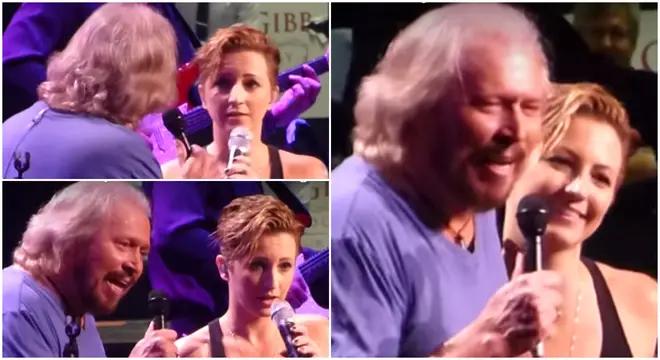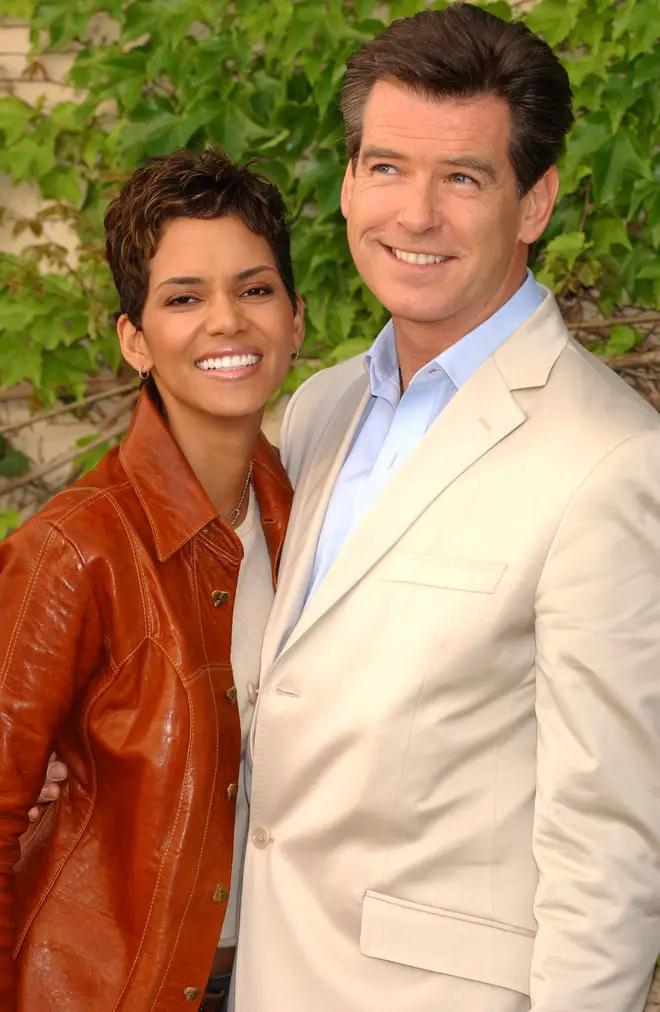Have you ever witnessed a performance so powerful that it sent shivers down your spine? In the world of music, certain moments transcend mere entertainment and become etched in our memories forever. One such moment occurred in 2014 when Barry Gibb, the last surviving member of the iconic Bee Gees, invited his niece Samantha Gibb on stage for a heart-wrenching duet of “How Can You Mend a Broken Heart.”
This wasn’t just any performance; it was a poignant tribute to Samantha’s father, Maurice Gibb, who had tragically passed away eleven years earlier. The song, a Bee Gees classic, held deep meaning for the family, symbolizing love, loss, and the enduring power of music.
A Family United by Grief and Music
Samantha Gibb, the daughter of Maurice Gibb and his second wife, Yvonne Spenceley Gibb, shared a close bond with her uncle Barry. Music was in their blood, and the stage became a sacred space where they could honor Maurice’s memory and connect with his spirit.
The duet took place at the Wells Fargo Center in Philadelphia during Barry Gibb’s “Mythology” world tour. As Samantha joined her uncle on stage, the audience erupted in applause, sensing the emotional weight of the moment. Barry, with his signature falsetto voice, began singing the opening lines, his voice filled with both sorrow and a sense of celebration.
When Samantha joined in, her voice clear and strong, it was as if Maurice’s presence filled the arena. The chemistry between uncle and niece was undeniable, their voices blending seamlessly in a way that honored the Bee Gees’ legendary harmonies.
 Barry Gibb and Maurice Gibb's daughter Samantha Gibb sharing a microphone on stage during a performance.
Barry Gibb and Maurice Gibb's daughter Samantha Gibb sharing a microphone on stage during a performance.
“How Can You Mend a Broken Heart”: A Song of Healing and Hope
The song choice was particularly moving. “How Can You Mend a Broken Heart” was released in 1971 as the first single from the Bee Gees’ album Trafalgar. It became a massive hit, reaching number one on the Billboard Hot 100 chart.
Beyond its commercial success, the song held personal significance for the Gibb family. Barry and Robin Gibb had written it after a period of estrangement, and the lyrics reflected the pain of their separation and the hope of reconciliation.
Years later, the song took on a new layer of meaning as Barry and Samantha sang it together. It became an anthem of healing, a testament to the power of love to transcend even the deepest loss. For Barry, it was a chance to share the stage with his niece and keep Maurice’s memory alive. For Samantha, it was an opportunity to connect with her father through music and share her own grief and love with the world.
The Gibb Collective: Carrying the Torch
Samantha Gibb’s musical talents extend beyond this one unforgettable performance. In 2017, she released an album titled The Gibb Collective, a family affair featuring contributions from the children, nieces, nephews, and younger sister of all four Gibb brothers. The album is a testament to the enduring legacy of the Gibb family and their unique musical DNA.
 Samantha Gibb, daughter of Maurice Gibb, posing for a picture.
Samantha Gibb, daughter of Maurice Gibb, posing for a picture.
The idea for the album originated from Samantha’s desire to pay tribute to her father and uncles. She started by recording a cover of the Bee Gees’ song “New York Mining Disaster 1941” with her partner, Lazaro. Encouraged by the positive response, they reached out to other family members, and the project blossomed into a full-fledged album.
The Gibb Collective features a mix of original songs and Bee Gees covers, each track showcasing the individual talents of the Gibb family’s next generation. The album is a testament to the power of music to unite families, heal old wounds, and create something beautiful and enduring.
A Lasting Legacy
The duet between Barry Gibb and Samantha Gibb is more than just a touching performance; it’s a reminder that music has the power to connect us across generations and help us navigate the complexities of love, loss, and family. It’s a testament to the enduring legacy of the Bee Gees and the timeless quality of their music.
The moment Barry and Samantha shared on stage will forever be etched in the hearts of those who witnessed it. It was a powerful reminder that even in the face of tragedy, music can provide solace, strength, and a glimmer of hope.



